NanoSight Limited (UK) have developed a unique instrument, which can image the light scattered from nanoparticles in liquid suspension. Particles in liquid suspension move under Brownian Motion, the speed of which can be used to calculate particle size through the application of the Stokes Einstein equation.
Particle size is calculated on a particle-by-particle basis which overcomes some of the inherent weakness in standard light scatter techniques which produce an average particle size weighted towards any larger or contaminant particles within a sample.

Figure 1. NanoSight LM10-HS: Ultrahigh Sensitivity Counting, Sizing and Imaging System for Nanoparticles.
Improving Sensitivity
The high sensitive system complements and extends the range of instruments supplied by NanoSight for imaging and sizing nanoparticles in liquid suspension. The system utilizes EMCCD camera technology (Electron Multiplication Charge Coupled Device) which has improved the sensitivity of the standard Nanosight system by a factor of x100.
Practically this means that the lower limit of detection for a particular particle type has been improved by a factor of 2 when compared to the standard instrument.
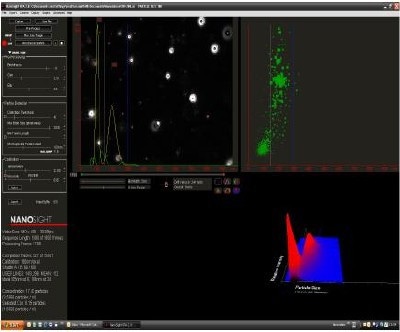
Figure 2. Number particle size distribution showing peaks at 100 and 200 nm which are fully resolved.
Experimentation
NTA does not use the intensity of light scattered as a measurand and hence there is no requirement for knowledge of the solvent refractive index of the solvent in the calculation. The software does however log and display relative particle intensities despite the absolute intensity not being used in the size calculation.
As more refractile particles scatter more light, DLS particle size distributions are weighted towards the more brightly scattering particles (whether they be larger or more refractile particles).
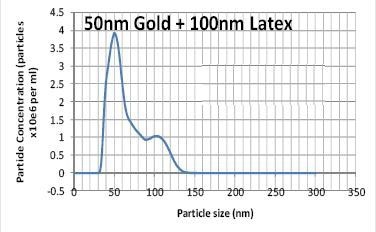
Figure 3. Plot of particle size vs. particle concentration for 50 nm gold + 100 nm latex solution.
Figs 4 and 5 show 3D plots of size vs intensity vs concentration. Notice in Fig 3, the 50 nm gold scatter light, more effectively than the 100 nm latex despite the fact they are smaller. This is characterized by a negative slope on the size vs intensity graph.
Fig 4 shows a more normal graph in which 100 nm latex are resolved from 200 nm latex nanoparticles. The positive slope demonstrate that the larger particles scatter light more effectively than the 100 nm particles.
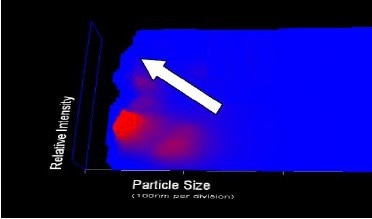
Figure 4. 3D plots of size vs intensity vs concentration for 50 nm gold + 100 nm latex solution.
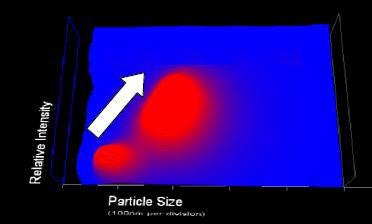
Figure 5. 3D plots of size vs intensity vs concentration for 100 nm latex + 200 nm latex solution.
Fig 6 shows a number size distribution from a monodisperse sample of gold colloid.
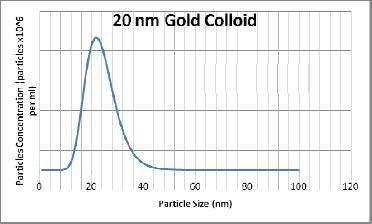
Figure 6. Number size distribution from a monodisperse sample of 20 nm gold colloid.
Sample Preparation
- Sample pre-treatment is minimal requiring only dilution to 107 - 1010 per ml.
- Accurate and reproducible analyzes can be obtained from video of only a few seconds duration and the results allow particle size v. number to be recovered.
- Given the close to real-time nature of the technique, changes in particle size distribution through aggregation or dissolution can be followed.
- The minimum detectable size measurable depends on the particle refractive index.
- The technique is absolute, requiring no calibration.
- The technique uniquely allows the user a direct qualitative view of the sample under analysis (perhaps to validate data obtained from other techniques such as Dynamic Light Scatter) and from which an independent quantitative estimation of sample size, size distribution and concentration can be immediately obtained.
Key Features of NanoSight LM10-HS
- Size Range: 10-1000 nm.
- Any particle type.
- Sample volume 350 µl
- Any Solvent
- Small instrument footprint
- 1 minute analysis time
- Refractive index is not required.
Applications of NanoSight LM10-HS
The ability to image and size increasing small particles is of paramount importance to an increasingly large number of applications:
- Virus counting: The ability to size and count viruses is of paramount importance to those working in vaccine development, phage therapeutics, virus purification/ultrafast sample characterization and gene therapy.
- Characterization of wear debris from orthopaedic implants. The size and concentration of wear debris can be related to the biologcial response to the implant as well as the mechanical deterioration of the implant.
- Drug delivery : Liposomes and nanoparticles for drug delivery. Size and concentration is related to the amount of drug delivered and the particle size influences the bio-distribution of particles/ liposomes.
- Protein aggregation: Protein aggregation is of importance when considering drug stability etc. The real time information provided by the NanoSight technique is of great importance when studying aggregation phenomena and optimizing manufacturing process yield of biologics and biotherapeutic products such as antibodies etc. Protein aggregation is of importance in the study of diseases such as Alzheimer's disease where protein aggregation has been linked with the progression of the disease.
- Nanoparticle toxicology studies: Considerable research is currently underway to understand the potential biological effects of nanoparticles on biological systems. The study of nanoparticle interactions with the human body and environment is of increasing importance. The ever decreasing size of engineered nanoparticles make the new high sensitive system ideal in such research.
- The instrument can be applied in many different applications. hence if your area of research is not covered in this brief summary, please contact NanoSight for further information.
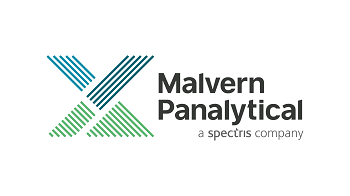
This information has been sourced, reviewed and adapted from materials provided by Malvern Panalytical.
For more information please visit Malvern Panalytical.